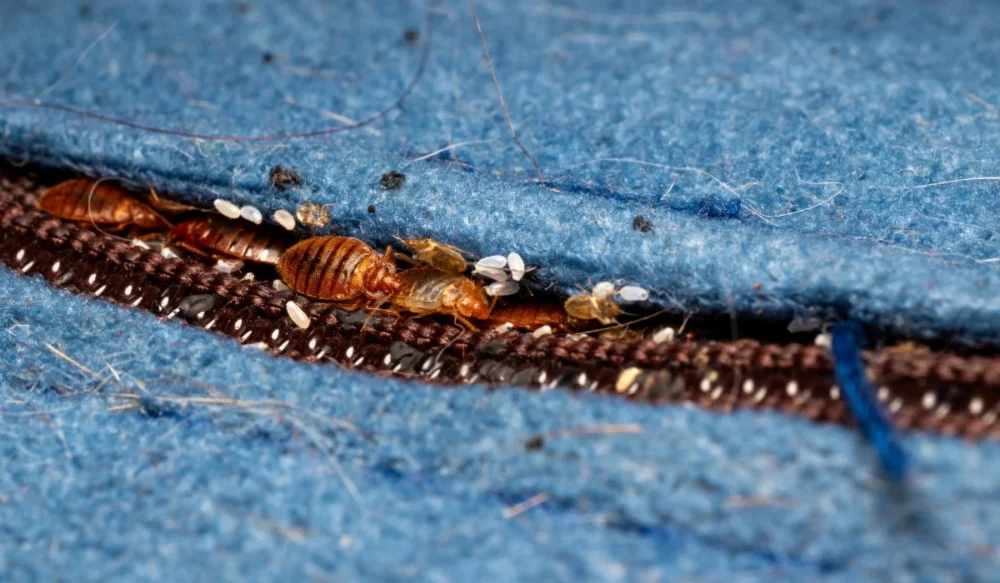The birth of a firstborn child is an exciting time for parents. Before the big event, the prospective parents prepare the nursery and shop for clothing, toys, and baby supplies. Months after the birth, the baby starts crawling, and the house needs to be child-proof. So, the new parents install electrical plug protectors, child locks on cabinets with household cleaning products, and place baby gates at stairway entrances.
Parents child-proof their homes to prevent harm to their children. In the same way, we need to protect ourselves against spiders in the house. In addition to being a nuisance, these arachnids can bite and inflict painful wounds that may require immediate medical attention. The first step in spider-proofing your house is to secure the Phoenix pest control experts from Green Home Pest Control. We are a local, family-owned company committed to providing eco-minded pest control solutions to our community. Awards from HomeAdvisor, Angie’s List, Yelp, and more prove our commitment to quality. Our highly-trained, fully vetted technicians will stop a spider infestation in your Phoenix house.
Just like new parents read books, articles, and internet blogs to learn how to child-proof their home, in this article, we give you the information you need to spider-proof your house. So, please keep reading to understand how to keep your family safe from spiders.
Habits And Behaviors Of Common Spiders
When new parents begin the child-proofing phase, they must first understand what babies do that can result in self-harm. Thus, our first step is to learn about spiders and how they behave in homes.
Many people confuse spiders with insects, but spiders are arachnids with several differences. For example, insects have six legs, but spiders have eight legs; insects have two antennae, but spiders do not; most insects have wings or winged groups within their species, but spiders do not have wings, nor can they fly. Insects have two compound eyes comprised of thousands of tiny, compressed light detectors, but spiders typically have eight eyes arranged in two rows. Finally, insects have a three-part body consisting of a head, thorax, and abdomen, but spiders have only two sections. There is one similarity spiders and insects have in common: an exterior skeleton or exoskeleton. Both species must shed their outer shell at each growth phase.
How spiders behave depends upon their species. The following types of spiders are problematic for many Phoenix homeowners:
Black widow spiders
Brown recluse spiders
Wolf spiders
Tarantulas
Jumping spiders
Banded garden spider
Let’s briefly examine the behavior of each spider common to our area.
Black widow spiders have a shiny black 1 1/2 to 1 3/8-inch body with two orangish-red triangle markings that look like an hourglass on the underside of the abdomen. These spiders create irregular webs near the floor to capture prey. Inside Phoenix homes, they live in cluttered areas within crawl spaces, basements, and garages. Black widow spiders are not aggressive, but they will bite if threatened. A bite from a black widow is painful and can trigger increased blood pressure, nausea, and sweating for the next few hours. Seek medical care to avoid further complications.
Brown recluse spiders have light to dark brown 1/4 to 1/2-inch bodies with a marking resembling a violin on their cephalothorax, the first section of their backs. Like black widows, brown recluse spiders spin irregular webs in undisturbed areas; they do not create their entanglements to catch unsuspecting insects but use them as a retreat. Furthermore, they hide in seldom-used clothing, shoes, boxes, and underneath old papers and furniture. Like black widows, brown recluse spiders do not attack people but will bite if threatened or squeezed. A bite from a brown recluse is painful and can produce a deep ulcer requiring medical attention.
Wolf spiders are hairy, dark brown arachnids with 3/8 to 1 3/8 inch (females) or 1/4 to 3/8 bodies (males). These spiders do not create webs but chase down their prey. Although they prefer not to remain inside houses, you will find them along baseboards and under furniture on the floor level when they are in your home. Wolf spiders do not bite unless handled aggressively or provoked. Their wounds do not cause ulcers or physical reactions but feel like a bee sting.
Tarantulas are 3 to 6-inch brown, hairy spiders that cause most people to run away in fear. Like other spiders, tarantulas are not fierce but warn aggressors by rearing up on their back legs. Tarantulas have venom that they use to neutralize prey, but this venom is not harmful to humans but may trigger an allergic reaction similar to a bee sting in some people. Tarantulas live in similar places as the black widow and brown recluse spiders.
Jumping spiders have black, brown, and grey 1/8 to 3/4-inch bodies and are often mistaken for black widow spiders. These spiders often have blue, grey, white, red, or yellow markings that make their legs look like a zebra’s body. These spiders do not build webs but live in cracks, between books, and drapery inside Phoenix homes. A bite from a jumping spider is rare, but if it occurs, the wound will be red, itchy, and slightly swollen. Take aspirin or acetaminophen to relieve the initial pain, and seek medical attention if conditions worsen or persist after 24 hours.
Banded garden spiders have black and yellow striped legs attached to their silvery-colored head and pointed abdomens. Banded garden spiders have lateral yellow, white, and black lines across their back section. This spider creates large circular webs in open areas outdoors. Although rare, a bite from one of these spiders has the same pain level as a bee sting and does not produce a reaction in most people.
No matter what spider is in your house or invading your Phoenix property, Green Home Pest Control removes common spiders in Arizona. Our trained technicians know the signs of a spider infestation and how to begin spider-proofing your location.
Factors That Attract Spiders Inside
Food, water, and shelter attract spiders to homes in Phoenix. Spiders are carnivores, and insects are their primary food source. Black widows are fond of ants, beetles, cockroaches, and scorpions; brown recluses may avoid scorpions due to their size, but they also eat similar anthropods. Tarantulas and banded garden spiders consume grasshoppers, crickets, and even small lizards as their game.
Spiders need water to survive. In the yard, you’ll find spiders in the moist soil underneath logs, stones, firewood piles, and areas with dense vegetation. Inside the house, they live around leaking pipes, drains, crawl spaces, basements, and attics; they live among cardboard boxes, stacks of papers, and other moisture-absorbing materials in the garage or house.
Spiders can live almost anywhere. Most prefer dark rooms, corners, or underneath furniture. Those who do not spin webs to capture prey hide in cracks and crevices; others create webs at ground level or near lights and other areas where insects are present.
To get rid of spiders, contact Green Home Pest Control. Our trained technicians will inspect your house and alert you to factors that attract spiders to your home.
Tips To Prevent Spiders And Their Pest Prey
Most spiders prefer to live outdoors under rocks, logs, shrubs, etc., so why do spiders enter homes? The main reason spiders invade houses is insects. Therefore, to deter Arizona house spiders from settling on your property and overtaking your home, implement these suggestions to keep insects and spiders away from your Phoenix house:
Trim shrubs and trees away from the house
Remove junk and debris from the yard
Eliminate items that collect water
Provide drainage to ditches, puddles, and gutters
Keep outdoor garbage containers closed
Elevate firewood and move 20 feet from the house
Mow the grass to a short level
Seal cracks in the foundation and roofline with silicone-based caulk
Install door sweeps
Minimize the use of outdoor lights at night
Cover all crawl space and attic vents with a fine wire mesh
Repair the door and window screens
Repair leaking faucets, drains, and pipes inside the house
Maintain a clean and dry home
These things will spider-proof your house against future infestations once Green Home Pest Control technicians remove different types of spiders from your property.
The Most Effective Spider Control With Professional Pest Control
The best way to get rid of spiders is to contact Green Home Pest Control. We will dispatch a trained technician to inspect your home. During the investigation, we will identify entry points, attractants, and the spider species infesting your house. Using the data from our inspection, we craft a strategic, ongoing treatment plan to eliminate the spiders.
We use environmentally-friendly botanical and organically based products to remove different house spiders and to prevent future generations. We also remove webs from the exterior. Because stopping spiders is not a once-and-done process, we recommend a bi-monthly service plan to ensure your Phoenix home stays spider and pest free.
When you discover spiders invading your Phoenix home, take action because their presence may indicate cockroaches, ants, and other problematic pests in your house. Contact Green Home Pest Control for a free estimate and learn more about our spider control program.
Request Your Free Estimate Today
Complete the form below to request your no obligation estimate.



